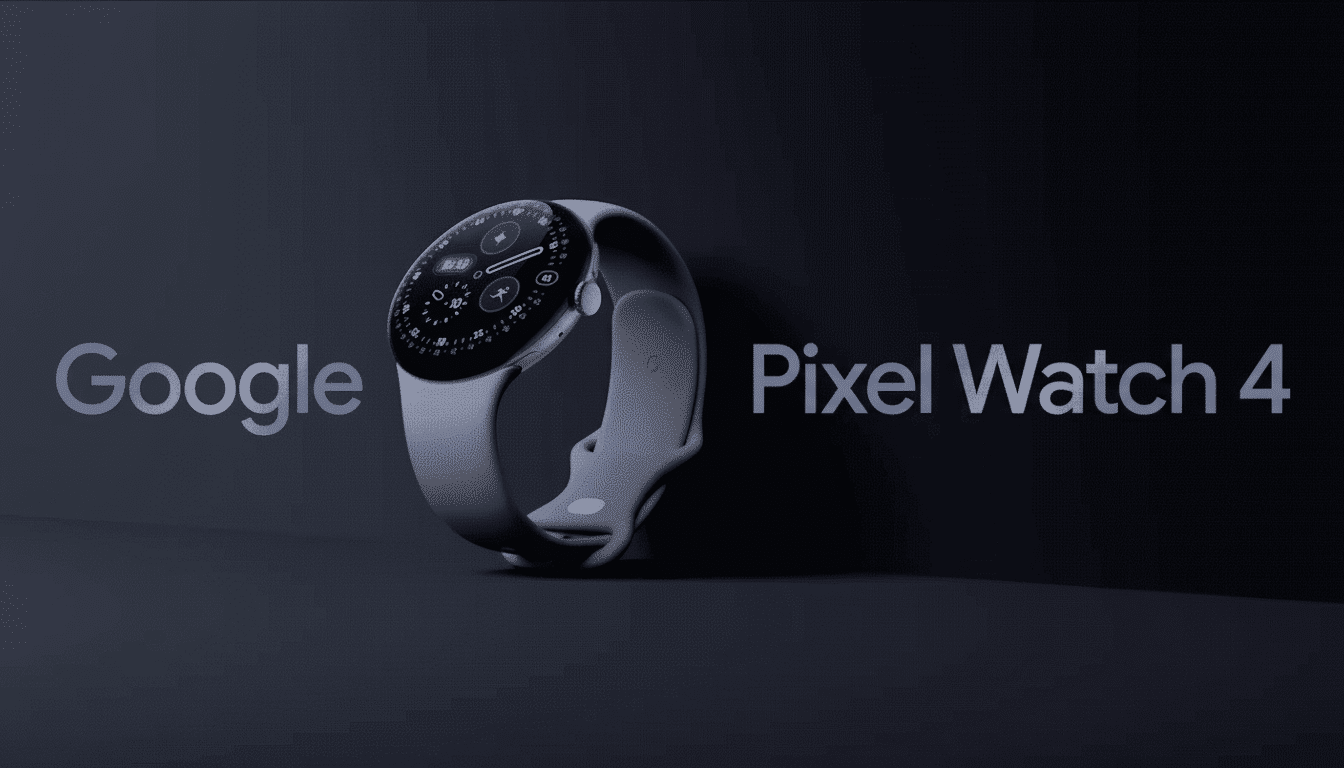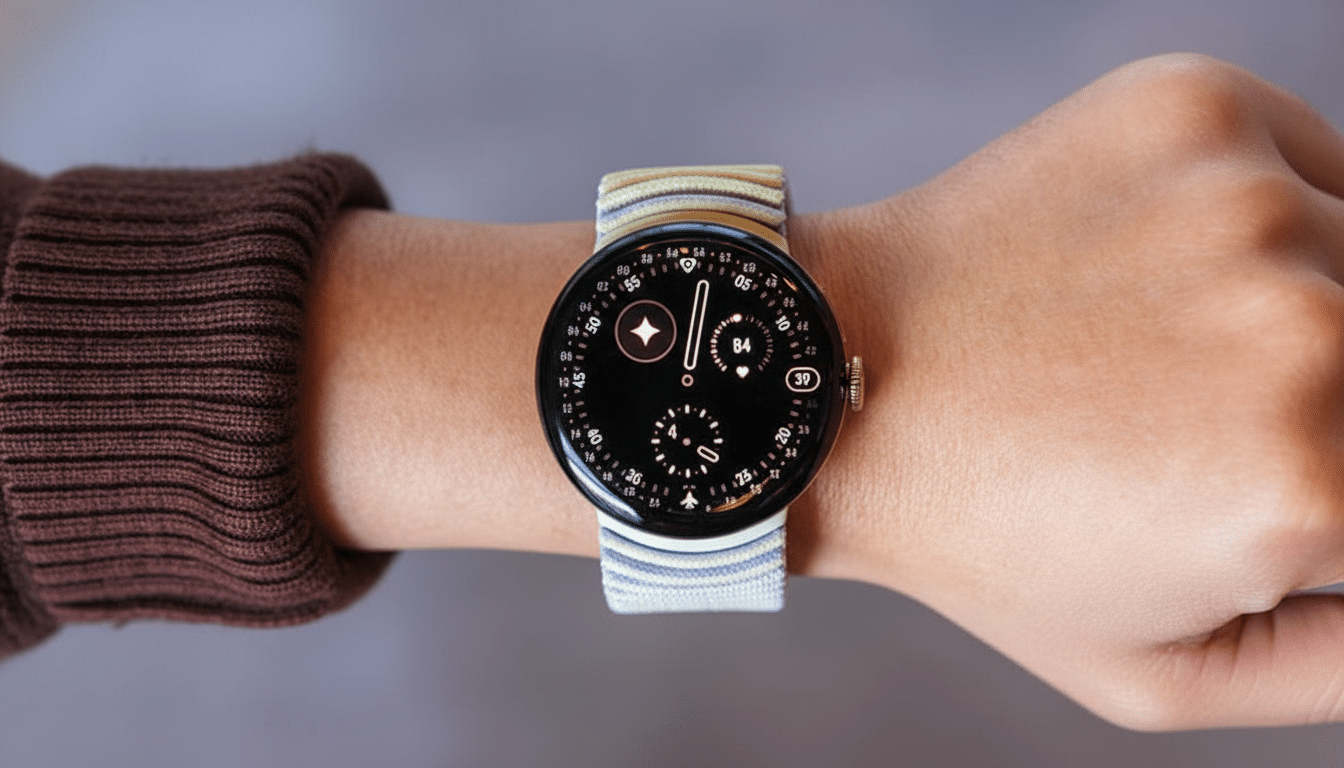What we immediately notice with the new Google Pixel Watch 4: it does look familiar, but the changes go beyond that, deeper than what you will see at first glance. A better, larger display, quicker charging, improved battery life and native on‑device AI support are all standout updates. The Pixel Watch 3 is competent and cheaper now. The question, then: Do those refinements warrant an upgrade — or does the old model do it for you in the sweet spot?
Price and Models: How the Pixel Watch 4 Compares to 3
Google maintained its price point for the Pixel Watch 4: The 41mm version starts at $349 while the 45mm model costs $399, with LTE usually adding about $100. In the meantime, we’ve seen considerable retail discounting of the Pixel Watch 3, with typical street prices around $249.99 for the 41mm and $299.99 for the 45mm. The 4 sets the pace, and if it’s money you’re buying on, then the Pixel Watch 3 is a bargain.
- Price and Models: How the Pixel Watch 4 Compares to 3
- Display and Design: Bigger screen, slimmer bezels, brighter
- Battery and Charging: Larger cells and much faster top-ups
- Performance and Connectivity: W5 Gen 2 and new radios
- Health and Fitness Tools: Sensors, accuracy and coaching
- Software and AI Features: Wear OS 6 and Gemini upgrades
- Upgrade Verdict: Who should buy the Pixel Watch 4 or 3?

Display and Design: Bigger screen, slimmer bezels, brighter
The Pixel Watch 4’s actual 360 display bends under the teardrop glass for a flat-again look and, more importantly, more usable space. Google quotes 10% more active screen and 15% slimmer bezels vs the Pixel Watch 3, both of which you notice when swiping tiles or tapping small UI targets. And peak brightness is now also said to be 3,000 nits (up from 2,000 nits), so glanceability in harsh sun is noticeably better. Both watches feature AMOLED panels covering the DCI‑P3 color space, so colors stay vibrant and text stays sharp on any model.
Materials and sizing are consistent — aluminum cases in 41mm and 45mm, with the familiar haptic crown and side button, as well as strong water- and dust-resistance. The more subtle victory for the Pixel Watch 4 is that you can repair it: Google built it so that screen and battery replacements could be carried out, a third‑party iFixit recently concluded, meaning you don’t have to toss out your whole watch in the case of one fault. It’s a practical improvement for those who would like to keep the watch in the long term.
Battery and Charging: Larger cells and much faster top-ups
We see upgrades ranging from 306mAh to 325mAh (41mm) and 420mAh to 455mAh (45mm) on the Pixel Watch 4. Google’s estimates shift ever so slightly to around 30 hours (41mm) and 40 hours (45mm) on a charge, up from about 24 on the Pixel Watch 3. In my independent testing environment (with always‑on display turned on), the larger Pixel Watch 4 burned through about 56 hours versus approximately 34 hours (41mm) and around 46.5 hours (45mm) for the Pixel Watch 3, under a similar use scenario. Battery life is always the No. 1 purchase driver in the various studies into consumer smartwatch preferences from research firms like IDC and Counterpoint Research, and this is where that advantage of the 4 feels most substantive on a daily basis.
Charging speed also improves. The new Pixel Watch 4 charger docks the watch sideways, and it finished a full fill-up in around 43 minutes in controlled testing when paired with an off-the-shelf 18W brick, down from about 78 minutes to top up your Pixel Watch 3 on its puck. Even faster top-ups change the watch from having to “charge overnight” to a convenient “plug it in when you shower” for sleep tracking and long GPS workouts.
Performance and Connectivity: W5 Gen 2 and new radios
Under the hood, the Pixel Watch 4 now uses Qualcomm’s Snapdragon W5 Gen 2 and Cortex‑M55 coprocessor (replacing the SW5100 and M33, respectively, on the Pixel Watch 3). The result is greater efficiency and a surface for features such as expanded AI on the device. Both models come with 2GB of RAM and 32GB of storage, so you’ve still got plenty of room for apps and locally stored music.

Connectivity sees practical refinements. Each provides dual‑band Wi‑Fi, optional LTE, NFC for payments and ultra‑wideband for more accurate device finding. The Pixel Watch 4 brings support for emergency satellite communication (where available) and dual‑frequency GPS for tougher urban and wooded routes, a welcome addition for runners, hikers and cyclists who venture into areas with less stable cell coverage.
Health and Fitness Tools: Sensors, accuracy and coaching
Most of the same sensors are present across both versions: multi‑path optical heart rate, ECG, SpO2 (desaturation monitoring), skin temperature and cEDA for stress tracking, altimeter and barometer alongside compass, gyroscope, with more, all connected to Fitbit’s analytics machine. Daily Readiness, Cardio Load and Target Load convert sensor data into actionable advice, and Fitbit Premium (roughly $9.99 a month) delivers more advanced insights, guidance and workout libraries.
Where the Pixel Watch 4 does emerge ahead is accuracy and reliability. The refined temperature sensor logic cleans up overnight readings, dual‑frequency GPS keeps pace and route tracks tighter, and automatic workout detection is more responsive. New sport profiles — including basketball and pickleball — along with a cycling heads‑up display in the Fitbit app round out the improvements. There is an AI‑powered coach, too, who will provide customized training and sleep advice, reflecting a larger industry trend toward personalized reinforcement over raw data — as evidenced by research from the American College of Sports Medicine and other sports science organizations.
Software and AI Features: Wear OS 6 and Gemini upgrades
Built‑in access to Google’s Gemini assistant comes with Pixel Watch 4, now on Wear OS 6. Raise‑to‑talk and new smart suggestions for apps like Calendar, Keep, and Maps take voice control to the next level as well: Now when you use your device on the go or at home, it’s just a tap away. The Pixel Watch 3 will continue to get software support and have extensive app support through the Play Store, though Google hasn’t promised that there would be feature parity for all AI functionality across older hardware. Traditionally, new Wear OS builds and AI features land on the most recent silicon first — oh, and sometimes only.
Upgrade Verdict: Who should buy the Pixel Watch 4 or 3?
If you have a Pixel Watch 3 and already like its daily battery life — which, like my general lack of preciousness toward running watches, is clearly important — there’s something solid in the design language, sensors and Fitbit integration here still; that discounted price is an excellent deal. But if you’ve ever longed for less compromise on battery life, quicker top‑ups, improved outdoor visibility, better GPS and native AI tools that really do feel integrated, then the Pixel Watch 4 is the more rounded of these two experiences.
If you’re a first‑time buyer or coming from an older Wear OS device, get the Pixel Watch 4 thanks to its display, battery, repairability and future‑proof silicon. Budget‑minded upgraders looking for the basics in fitness tracking, notifications and little else: The Pixel Watch 3 has you covered — just with fewer creature comforts and some breathing room on all those pending AI visions.

